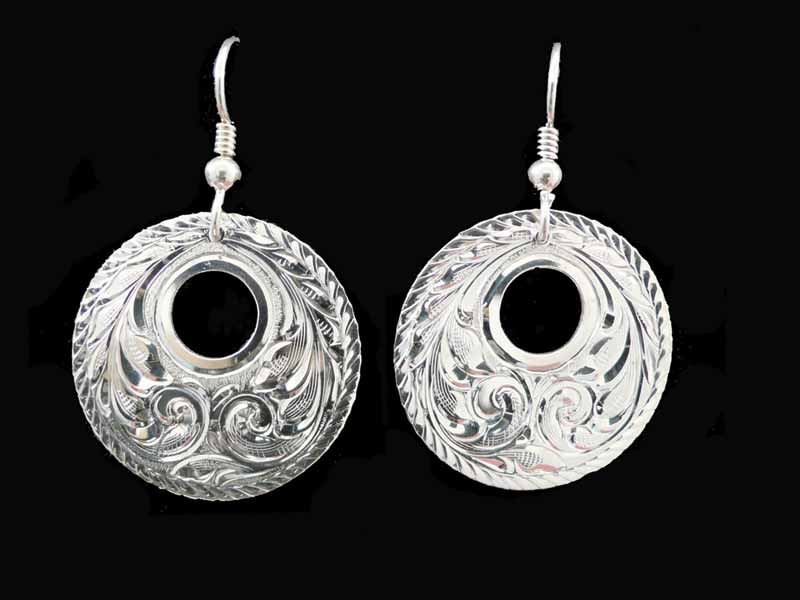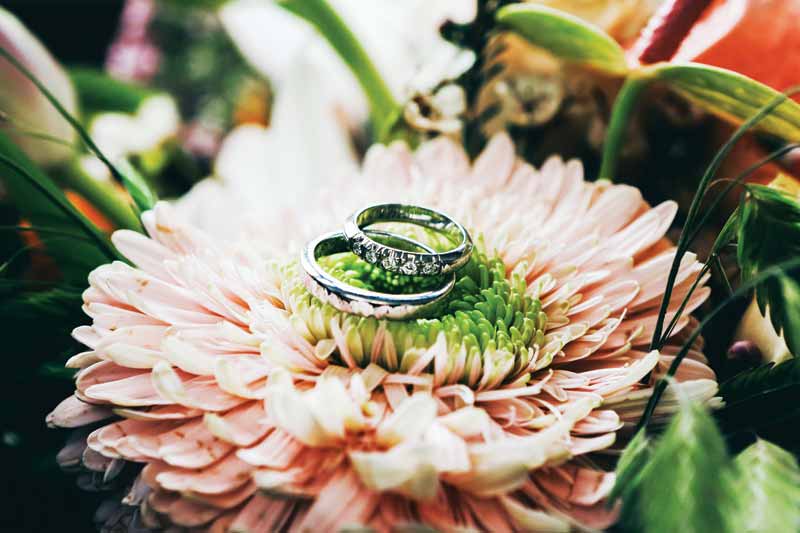
Many cultures have esteemed silver because of its malleability, ductility, and high lustre. Thanks to silver’s pliability, metalsmiths can create intricate jewellery like the Mexican filigree earrings in Figure 1.
It was not until the 1850s that Navajo artisans in North America began learning silversmithing techniques, drawing inspiration from Mexican silversmiths. Mexico, with its rich history of silver mining, has consistently been the world’s largest producer of silver since the 1500s, when it was under Spanish control. As a result, silver jewellery has been an important export of Mexico.
Navajo silversmiths shared their skills with other Indigenous communities, contributing to the widespread recognition of Indigenous silver jewellery for its distinctive craftsmanship. An example is the Hopi-style sterling silver cuff in Figure 2.
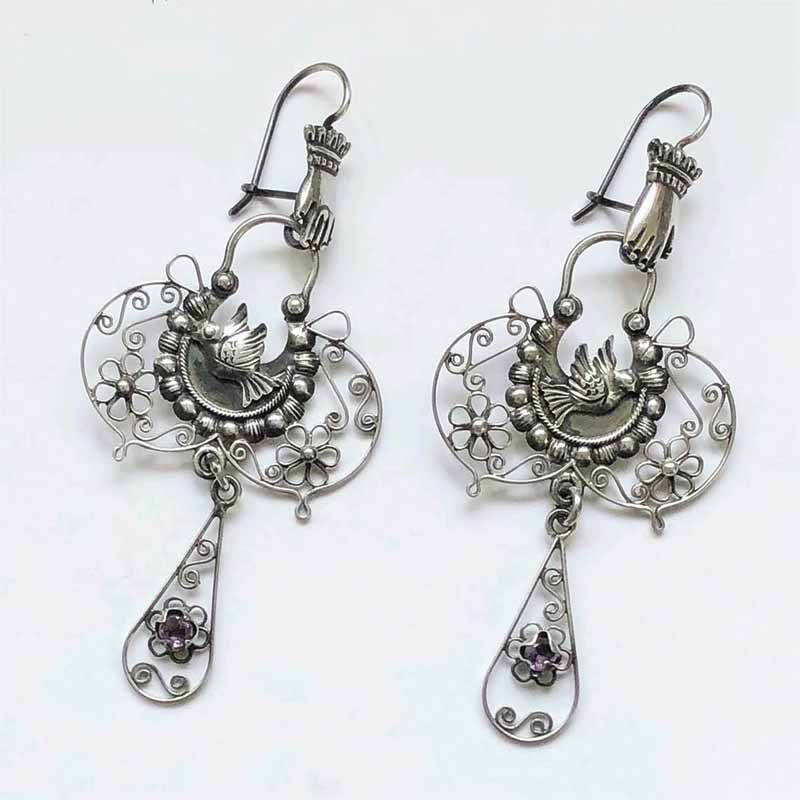
Silver alloys and fineness marking standards
Like pure gold and platinum, pure silver is too soft for most jewellery manufacturing techniques, so it is commonly alloyed with other metal(s). Copper is typically preferred because it improves silver’s hardness and durability without detracting from the characteristic bright shine of silver. However, even alloyed silver does not hold gemstones as securely as settings made of white gold, platinum, or palladium alloys because the tensile strength of sterling silver is lower.
Sterling silver is the alloy most commonly used in jewellery and usually consists of 92.5 per cent silver and 7.5 per cent copper. Adopted as a standard alloy in England in the 12th century, sterling silver is normally identified with its fineness marking of 925.
The Guide to the Precious Metals Marking Act and Regulations of the Competition Bureau Canada states, “Silver may be marked using any of the following quality indicators: sterling (or STG, ster.), silver, sterling silver, argent, argent sterling, .925.”
Britannia silver is defined in the Hallmarking Act 1973 as having a fineness of 958.4 parts per thousand, while the fineness mark itself is only 958. Britannia silver replaced sterling silver as the compulsory silver standard in England from 1696 until 1720. Sterling silver was approved again for use by silversmiths in 1720. However, many of the silver bullion coins issued by the Royal Mint since 1998 have been minted in Britannia standard silver. Britannia silver should not be confused with Britannia metal, a pewter-like alloy containing no silver.
Coin silver is another common silver alloy that contains 10 per cent to 20 per cent copper. U.S. dimes, quarters and half dollars minted before 1965 contained 90 per cent silver. An alloy popular in East Asia uses 90 per cent silver and 10 per cent zinc.
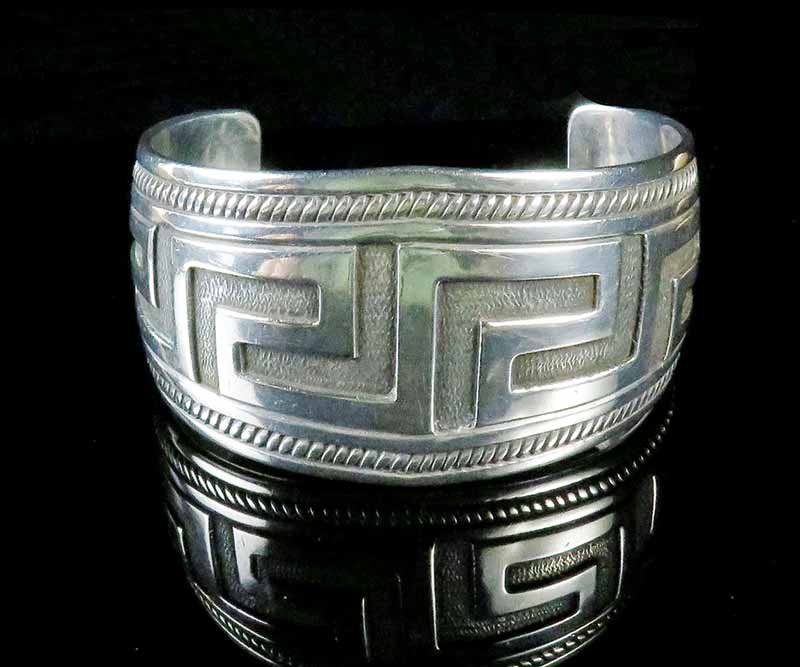
In Europe, alloys with 80 per cent, 83 per cent, and 83.5 per cent are also used. Metal with 80 per cent silver is stamped 800, sometimes called European or continental silver. This is probably the second most used silver standard in the world. France and Germany are two important European countries that have used 800 silver.
In Peru, a high percentage of jewellery is made with 95 per cent silver alloys and stamped 950. Flatware and hollowware in France have been made out of 950 silver, and a few silversmiths in the silver centre of Taxco, Mexico, have used 950 silver alloys. Occasionally, when people see the 950 stamp, they assume that the metal is platinum. Look for “PT” or “PLAT” next to the 950 stamp to determine if it is a platinum stamp.
Silver jewellery sold at street vendors can have varying degrees of fineness, sometimes lower than standard qualities, making it difficult to repair and size. Therefore, if you buy rings from tourist vendors, ensure they fit and don’t need to be resized.
Avoiding silver tarnish
A disadvantage of most silver alloys is that they tarnish when exposed to sulfur elements in the air. Tarnishing is a surface discolouration mainly resulting from the formation of silver sulfide, Ag2S, although other compounds such as sulfate and chloride can also contribute to tarnishing.
Germanium is a silver-white element chemically similar to tin. In the 1990s, Peter Johns, a silversmith in England, discovered that adding germanium to silver could make it resistant to tarnish and fire scale—a dark coating that forms on silver when the metal oxidizes at high temperatures. This tarnish-resistant silver is patented and sold under the trade name Argentium. There are two grades of Argentium silver: 93.5 per cent minimum silver content and 96 per cent minimum silver, which raises the level above the UK Britannia standard. Argentium International Ltd. guarantees that all its silver is recycled and nickel-free.
United Precious Metal Refining (UPMR) in Alden, N.Y., has also developed and patented a germanium-based tarnish-resistant silver called Sterlium Plus. It is easy to work with for casting and fabrication by rolling and provides a high-lustre finish.
Other tarnish-resistant alloys have been created by replacing the 7.5 per cent copper in sterling silver with materials such as platinum, palladium, silicon, zinc, or nickel. The presence of copper in sterling silver accelerates tarnishing, so when copper is omitted, the resulting silver alloy is more tarnish-resistant. An example is Continuum® sterling silver, developed by Stuller (Figure 3). It contains approximately 95 per cent silver and 2.75 per cent palladium. Stuller says, “Continuum’s mechanical properties fall between those of 14K yellow gold and most other sterling silver alloys. It can easily be age-hardened up to 150 HV, making it comparable to the as-cast hardness of 14K gold. This versatile alloy can be used for casting, die striking, and producing mill products.”
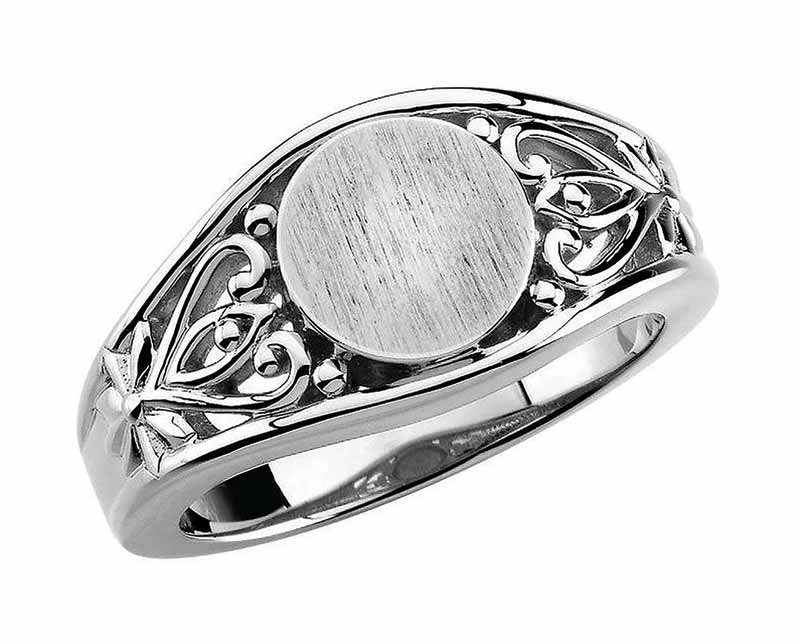
Tarnish-resistant silver is often sold as “tarnish-free” silver, which can be misleading. Any silver product can tarnish over the long term. Another way to make silver tarnish-resistant is to plate it with rhodium, platinum, or palladium or to coat it with a non-metallic substance. Rembrandt Charms adds rhodium plating on all sterling silver merchandise to prevent tarnishing (Figure 4). They x-ray the products as they exit their plating facility to ensure adequate thickness and quality. Unlike many plating facilities that use nickel to adhere to the rhodium, they use palladium. Palladium creates a strong bond for the rhodium and allows many collectors with nickel allergies to be able to wear their silver charms and jewellery.
Plated or coated silver usually costs less than tarnish-resistant silver, but the plating or coating can wear away or come off when the silver is polished and/or worked on by a jeweller. This can happen, for example, when ring sizing or soldering is performed.
Chemical solutions can also help protect silver from tarnishing. Legor makes an anti-tarnish solution that can be used when a regular sterling silver piece has been completed. It is dipped into the bath, and the ingredients in the chemical fill the fine pores of the silver surface—sealing it for some time against tarnishing.
Suppose you have jewellery or objects that are not tarnish-resistant, plated, or coated. In that case, Intercept Technology has sulfur absorption strips, pouches, bags, and containers designed to protect silver by absorbing sulfur for a specified number of years (see Figure 5).
If your silver is not tarnish-resistant, plated, coated, or protected with sulfur-absorbing material, it may have darkened after exposure to corrosive agents in the air. The silver can be returned to its former lustre by removing the silver sulfide. There are two ways to remove it. One way is to mechanically remove the silver sulfide from the surface of the silver (e.g., buffing), but some silver will also be removed.
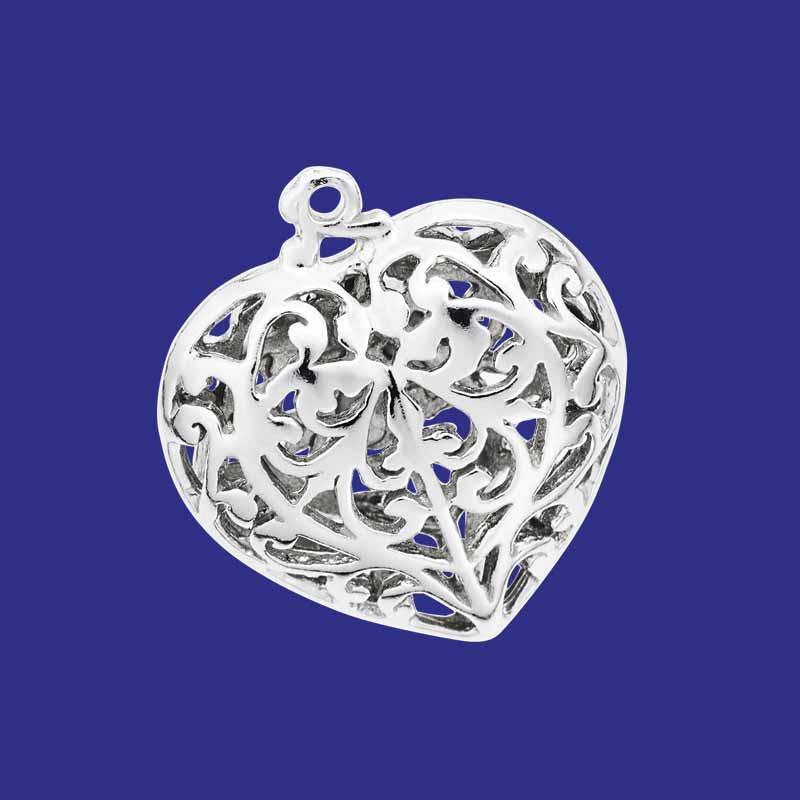
The other way to remove tarnish is to reverse the chemical reaction and turn silver sulfide back into silver by dipping the silver object into a chemical solution. In this process, the silver remains in place.
Kathrin Schoenke, a jeweller and platinum industry consultant, recommends a simple way to conduct this electrolytic-type process, which allows the removal of the sulfate while leaving the silver intact. You will need a sheet of aluminum foil, hot water, baking soda, salt and a pot or pan, then:
1) Line the pot or pan with aluminum foil and place your tarnished silver jewellery item(s) or object(s) on top of the foil. For the process to work, the object must have direct contact with the aluminum foil.
2) Pour hot water over the item so it is entirely covered. Add a tablespoon of salt (two for a large pot) to create the electrolytic solution.
3) Pour a package of fresh (FRESH!) baking soda into the mix
4) Let it sit and watch how the sulfate is stripped off the silver surface. Remove the items when they are clean.
Naturally, this process only works for silver items without pearls or other gems that should not be exposed to hot chemical solutions. Remember that hot water can adversely affect the life span of glue.
This process works because aluminum has a greater affinity for sulfur than silver does. In the above process, the silver sulfide reacts with aluminum and sulfur atoms are transferred from silver to aluminum, freeing the silver metal and forming aluminum sulfide. Chemists represent this reaction with a chemical equation: silver sulfide + aluminum = silver + aluminum sulfide.
Silver alloys can differ in composition and may have tarnish layers other than silver sulfide. Consequently, the above method might not be adequate for removing all tarnish from silver. Chemical shelf cleaners may be required, especially for silver that is below 925 in purity.
Debra Sawatzky, a Canadian appraiser specializing in antique and estate jewellery, advises that new cleaning techniques should be reserved for new items and that old items should be cleaned by hand, the old-fashioned way. Otherwise, you may devalue older items, including flatware and hollowware. She says that people pay premium prices for patina—the surface appearance of silver that grows beautiful with age—and that the glow from hand polishing is more desirable on old objects than that obtained with modern cleaning methods.
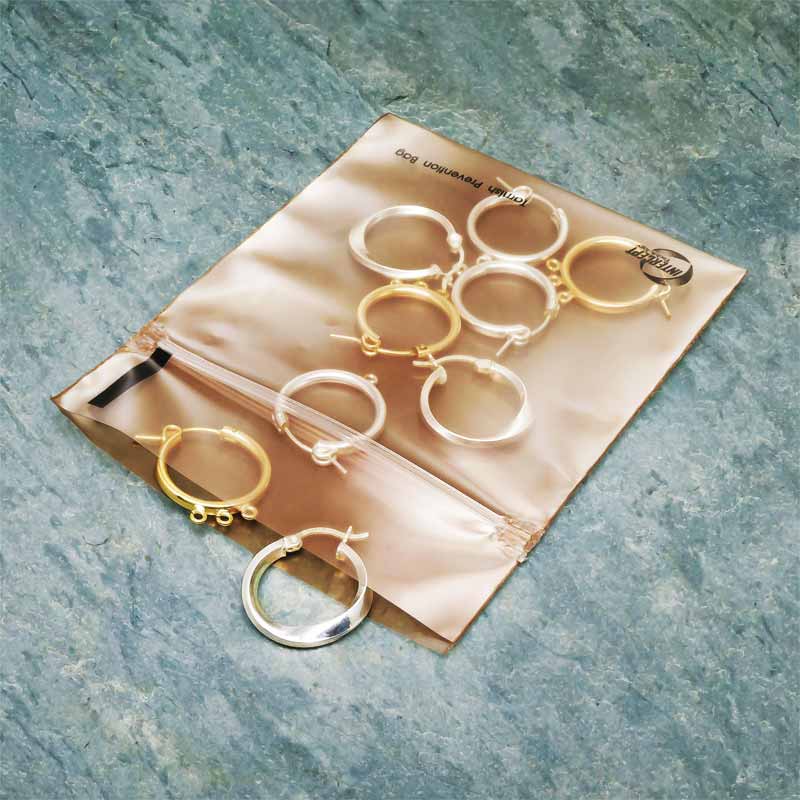
Silver jewellery today
Silver continues to inspire artists and artisans to create unique jewellery, such as the engraved earrings in Figure 6 by Olson Silver in Alberta. Silver’s malleability makes it an excellent engraving metal.
Before the price of gold began to skyrocket, silver was generally used for fashion jewellery. Today, it is also used for high-end jewellery and even diamond rings now that harder alloys have become available. A few manufacturers who used to sell only gold jewellery are now selling mainly silver jewellery due to the high cost of gold and the increasing popularity of silver. It can be worn with any outfit, from casual to formal. This versatility makes silver an ideal jewellery metal for both men and women.
Renée Newman, GG, is a gemmologist and the author of Gold, Platinum, Palladium, Silver & Other Jewellery Metals and 14 other books on jewellery and gems. She became interested in jewellery metals while overseeing jewellery quality control at the Josam Diamond Corporation in downtown Los Angeles. For more information about Newman and her books, visit ReneeNewman.com.
